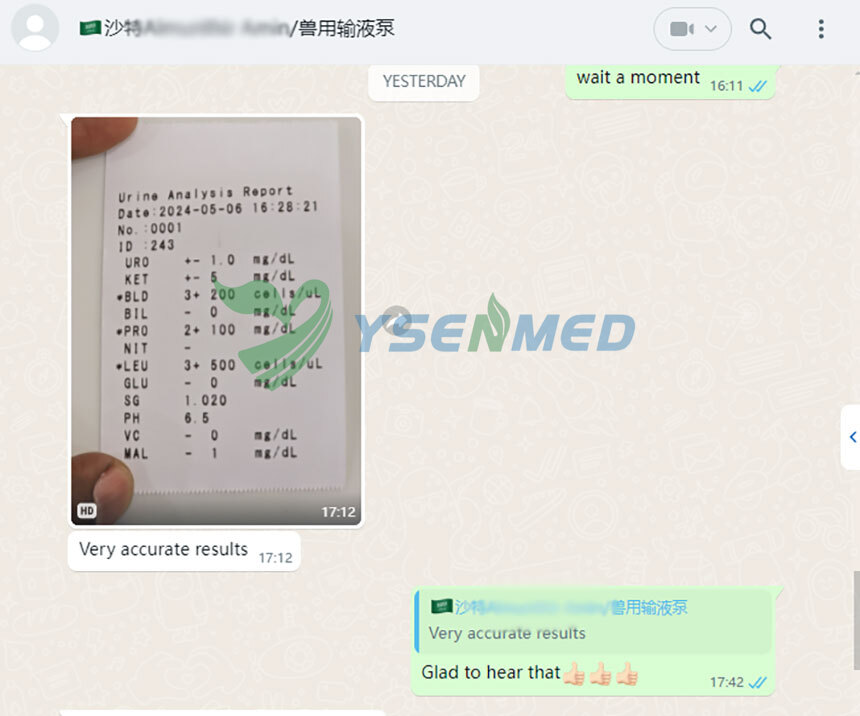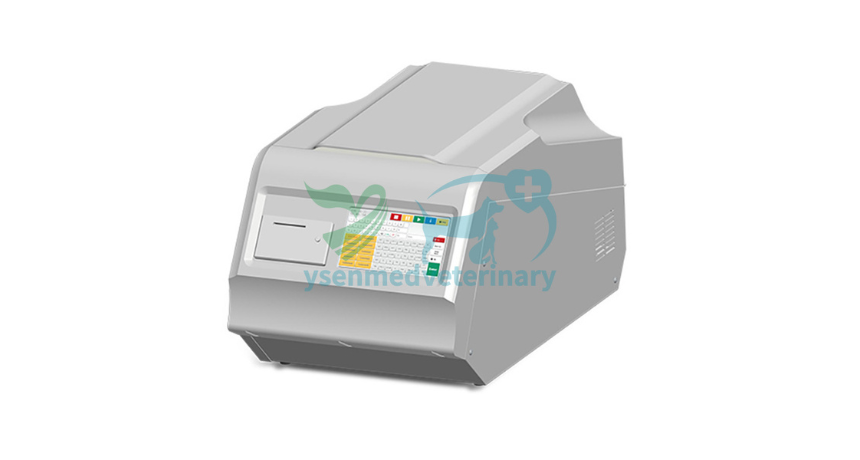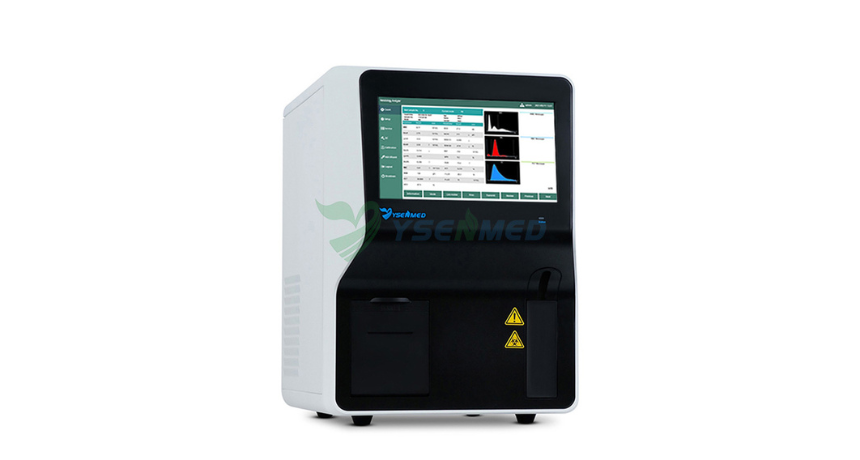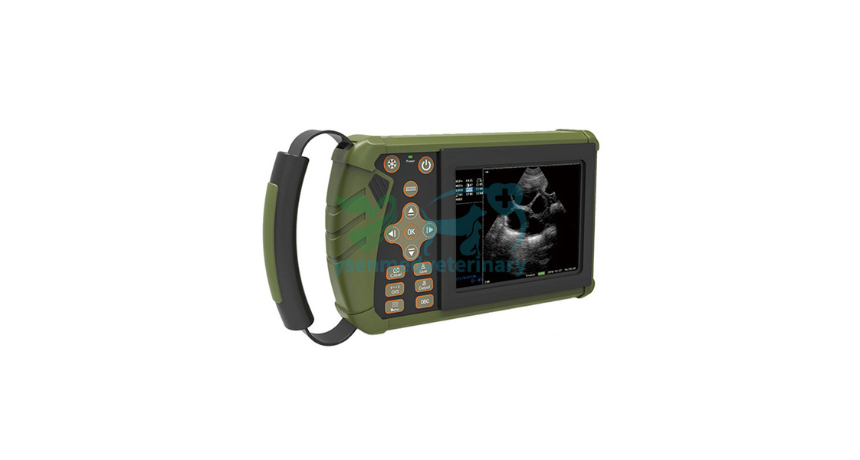In the realm of veterinary medicine, precision and accuracy are not just desirable traits—they're absolutely essential. Every diagnosis, every treatment plan, hinges on the ability of veterinarians to obtain reliable data quickly and efficiently. That's where
veterinary dry immunofluorescence quantitative analyzers come into play. These cutting-edge devices are revolutionizing the way we diagnose and treat animals, providing veterinarians with the tools they need to deliver optimal care. Let's explore the fascinating world of these analyzers and delve into their incredible capabilities.

1. Understanding Veterinary Dry Immunofluorescence Quantitative Analyzers
Veterinary dry immunofluorescence quantitative analyzers, often abbreviated as VDIFA, are sophisticated diagnostic instruments designed to detect and quantify specific substances in biological samples obtained from animal patients. Unlike traditional wet assays, which involve the cumbersome preparation and handling of liquid reagents, VDIFA systems utilize dry reagent technology, streamlining the testing process and delivering results with unprecedented speed and accuracy.
2. How Do They Work?
The operation of VDIFA systems revolves around the principles of immunofluorescence and quantitative analysis. When a biological sample, such as blood, urine, or tissue fluid, is introduced into the analyzer, it comes into contact with specialized dry reagents containing fluorescent markers. These markers are designed to bind specifically to target substances within the sample, such as antibodies, antigens, or other biomolecules of interest.
Once the sample and reagents are mixed, the analyzer employs sophisticated optical systems to measure the intensity of the fluorescent signal emitted by the bound markers. This fluorescence intensity is directly proportional to the concentration of the target substance present in the sample. By comparing the signal to predefined calibration curves generated during instrument calibration, the analyzer can accurately quantify the substance, providing veterinarians with invaluable diagnostic information.
3. The Benefits of Veterinary Dry Immunofluorescence Quantitative Analyzers
The adoption of VDIFA systems in veterinary practice offers numerous advantages over traditional testing methods. Firstly, their speed and efficiency enable rapid diagnosis, allowing veterinarians to make informed treatment decisions without delay. This is particularly beneficial in critical care scenarios where timely intervention can be a matter of life or death for the animal patient.
Secondly, the accuracy and reliability of VDIFA systems ensure consistent and reproducible results, minimizing the risk of false positives or false negatives. This not only enhances the quality of patient care but also reduces the need for costly follow-up testing and unnecessary treatments, ultimately saving both time and resources.
Furthermore, the compact size and user-friendly interface of many VDIFA analyzers make them well-suited for deployment in various veterinary settings, including clinics, hospitals, and research laboratories. Their versatility and ease of use empower veterinarians to perform on-site testing with minimal training, facilitating timely diagnosis and treatment even in remote or underserved areas.
4. Applications in Veterinary Medicine
The applications of VDIFA technology in veterinary medicine are vast and diverse, spanning various fields of practice, including clinical diagnostics, infectious disease surveillance, and therapeutic monitoring. These analyzers can be utilized to detect and quantify a wide range of substances, including antibodies, hormones, enzymes, and metabolic markers, enabling comprehensive assessment of animal health and disease status.
In clinical practice, VDIFA systems play a crucial role in diagnosing infectious diseases, autoimmune disorders, endocrine imbalances, and neoplastic conditions in companion animals, livestock, and wildlife species. They provide veterinarians with valuable insights into the underlying pathophysiological processes driving disease progression, guiding the selection of appropriate treatment strategies and monitoring responses to therapy over time.
In addition to diagnostic applications, VDIFA technology also facilitates epidemiological surveillance and outbreak investigation by enabling rapid and sensitive detection of infectious agents in animal populations. By monitoring changes in biomarker levels or pathogen prevalence over time, veterinarians can identify emerging threats, track disease trends, and implement targeted control measures to prevent the spread of infectious diseases within and between species.
5. Future Directions
As technology continues to evolve, the future of VDIFA technology holds tremendous promise for further advancements and innovations in veterinary diagnostics and therapeutics. Researchers and developers are actively exploring novel approaches to enhance the sensitivity, specificity, and multiplexing capabilities of VDIFA systems, allowing for simultaneous detection and quantification of multiple analytes within a single sample.
Moreover, ongoing efforts to miniaturize and integrate VDIFA technology into portable and point-of-care devices promise to revolutionize veterinary practice by expanding access to advanced diagnostic capabilities beyond traditional laboratory settings. These handheld analyzers could empower field veterinarians, wildlife biologists, and livestock producers to perform rapid on-site testing in remote or resource-limited environments, facilitating early disease detection, surveillance, and control.
Collaborations between academia, industry, and regulatory agencies are essential to drive innovation and ensure the responsible development and deployment of VDIFA technology in veterinary medicine. By harnessing the collective expertise and resources of diverse stakeholders, we can harness the full potential of VDIFA analyzers to improve animal health, welfare, and conservation efforts worldwide.
Conclusion
In conclusion, veterinary dry immunofluorescence quantitative analyzers represent a paradigm shift in veterinary diagnostics, offering veterinarians unprecedented speed, accuracy, and versatility in detecting and quantifying biomarkers of health and disease in animal patients. By harnessing the power of immunofluorescence technology and quantitative analysis, these cutting-edge devices empower veterinarians to make informed clinical decisions, monitor treatment responses, and safeguard animal populations against infectious threats. As we look to the future, continued investment in research, development, and collaboration will drive innovation and expand the horizons of veterinary medicine, ensuring that precision remains at our fingertips in the pursuit of optimal animal health and well-being.
FAQs:
What types of samples can be analyzed using veterinary dry immunofluorescence quantitative analyzers?
Veterinary dry immunofluorescence quantitative analyzers are versatile instruments capable of analyzing various types of biological samples, including blood, urine, tissue fluids, and cerebrospinal fluid. These analyzers are particularly useful for detecting and quantifying antibodies, antigens, hormones, enzymes, and other biomolecules present in animal specimens.
How long does it take to obtain results from a veterinary dry immunofluorescence quantitative analyzer?
The time required to obtain results from a veterinary dry immunofluorescence quantitative analyzer depends on several factors, including the specific assay being performed, the complexity of the sample, and the instrument's throughput capacity. In general, these analyzers offer rapid turnaround times, with most tests yielding results within minutes to hours, enabling veterinarians to make timely clinical decisions.
Are veterinary dry immunofluorescence quantitative analyzers user-friendly?
Yes, many veterinary dry immunofluorescence quantitative analyzers are designed with user-friendly interfaces and intuitive software, making them accessible to veterinary professionals with varying levels of expertise. These analyzers typically feature touchscreen displays, step-by-step prompts, and pre-programmed assay protocols, allowing users to perform tests efficiently and accurately with minimal training.





